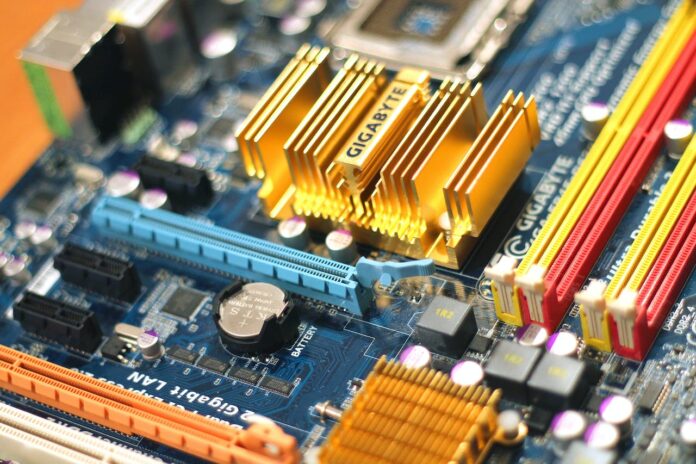As the digital landscape continues to evolve, businesses must stay abreast of the latest trends to maintain a competitive edge. Emerging technologies in the IT industry have a profound impact on how we live, work, and interact with the world around us. This article will provide an overview of some of the most promising and influential emerging technologies in IT, discussing their potential impacts, and how businesses can adapt to and benefit from them.
With the rapid growth and development of new technologies, it is important for businesses to collaborate with an experienced IT consultant to navigate the complexities of implementing and integrating these innovations. Expert IT consultants can help businesses identify the right technologies, develop strategies, and ensure a smooth transition while maximizing the benefits they can yield from adopting these emerging trends.
Internet of Things (IoT)
The Internet of Things (IoT) refers to the millions of interconnected devices that communicate and interact with each other, providing unprecedented amounts of data for businesses. From smart agriculture to wearables that monitor our health, IoT devices allow businesses to adapt to their customers’ needs and improve their operations.
Augmented Reality (AR) and Virtual Reality (VR)
AR and VR technologies have made huge strides in recent years, moving beyond gaming and entertainment. Industries such as retail, education, healthcare, and real estate have begun adopting these immersive experiences, creating new ways for customers and businesses to interact.
Artificial Intelligence (AI) and Machine Learning
Artificial Intelligence and Machine Learning are transforming the way businesses perform tasks and make decisions by automating processes and offering insights. The potential applications of AI extend from customer service to supply chain management and everything in between, revolutionizing industries across the board.
Edge Computing
Edge Computing refers to processing data closer to its source, rather than relying on centralized data centers. With IoT devices generating massive amounts of data, edge computing aims to reduce latency and bandwidth usage, improving overall efficiency and performance.
Robotic Process Automation (RPA)
RPA is a technology that automates mundane, repetitive tasks, freeing up employees to focus on more strategic responsibilities. RPA has seen rapid adoption in industries such as finance and healthcare, improving productivity and reducing errors.
Blockchain
Blockchain technology is known primarily for its role in cryptocurrencies like Bitcoin, but its potential extends far beyond finance. By providing an immutable, decentralized record of transactions, blockchain offers a new level of security and transparency that can be used in healthcare, supply chains, and even voting systems.
5G Technology
5G is more than just an upgrade to our current networks – it’s a complete game-changer. With increased speeds, low latency, and network slicing capabilities, 5G is poised to revolutionize industries ranging from entertainment and gaming to healthcare and automotive.
Cybersecurity Advancements
As new technologies emerge, so do new cybersecurity threats. Advances in cybersecurity aim to combat these evolving threats, utilizing tools like AI and machine learning to better predict and respond to potential attacks, ensuring that businesses can continue to function securely and efficiently.
Quantum Computing
Quantum Computing harnesses the power of quantum mechanics to perform computational tasks at astonishing speeds, solving problems that were previously thought impractical or impossible. While still in its early stages, the potential of quantum computing could revolutionize fields such as cryptography, optimization, and drug discovery.
Voice and Natural Language Processing (NLP)
Voice and NLP technologies are breaking down barriers and making it easier than ever for humans to interact with machines. From virtual assistants like Siri and Alexa to customer service chatbots, the applications of voice and NLP are rapidly expanding and transforming the digital experience.
Big Data Analytics
Big Data Analytics refers to the process of examining large, complex datasets to discover hidden patterns, trends, and meaningful insights. As the digital universe continues to grow, businesses can leverage these insights to make better, data-driven decisions and stay ahead of the competition.
Serverless Computing
Serverless computing is a cloud computing model where the cloud provider dynamically allocates resources and manages server infrastructure. It allows businesses to build and run applications without worrying about server management, enabling them to focus on their core product instead of infrastructure maintenance.
Digital Twins
A digital twin is a virtual representation of a physical product, asset, or process. By creating precise digital replicas, businesses can monitor performance, optimize processes, and predict potential issues before they become critical. Digital twin technology is expected to play a significant role in industries like manufacturing, aerospace, and transportation.
Understanding and staying ahead of emerging technologies is crucial for businesses that want to thrive in the modern world. By embracing these IT trends, organizations can adapt to changing landscapes, improve customer experiences, and fuel innovation that drives long-term success.





